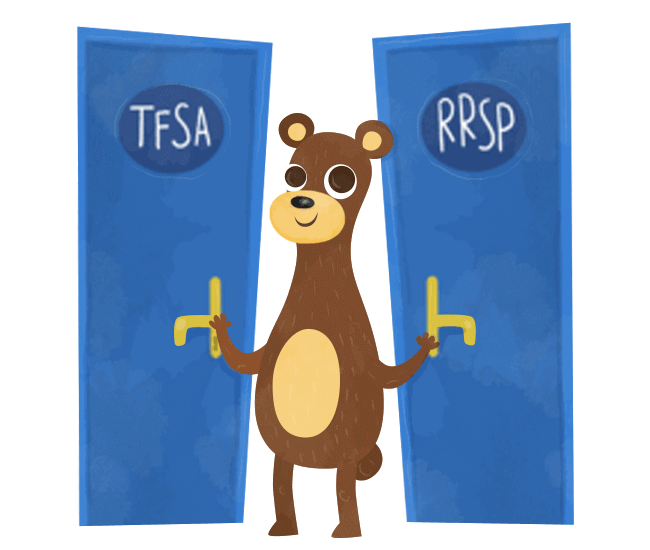
“Do I watch The Devil Wears Prada again or do I finally get around to seeing Sophie’s Choice? It is what you would call a classic difficult decision.” – Michael Scott, The Office
When it comes to saving for your goals, the two registered accounts that are often called up to the plate are a Registered Retirement Savings Plan (RRSP) or a Tax-Free Savings Account (TFSA). The truth is, if you were to ask a handful of financial experts whether an RRSP or a TFSA is right for you, you’re likely to get a handful of different answers. While this is not very helpful, you might decide to forgive these advisors because this is a classic difficult decision.
The TFSA vs RRSP debate is so complicated that most advisors need to fall back on generalizations and rules of thumb. A common one is that TFSAs are a better choice for lower income earners. But this isn’t a very satisfying answer and isn’t always true for each individual situation.
It helps a bit to make the question more precise: “Where should I put the money I have today in order to maximize the amount of after-tax dollars I’ll have when it comes time to spend it?” Phrased that way, you’ll start to see some nuances. For example, you might have income and savings you’re planning to spend in five years and more dollars you’re planning to spend in 25 years. Those dollars might have different investment risk profiles and tax characteristics. And your personal situation may have complexities. For example, you might be a high earner in the top tax bracket today, but what tax bracket will you be in at age 70? Situations and income levels change which is important to keep in mind when considering RRSPs vs TFSAs.
All of these factors and more go into deciding what to do with your monthly savings right now. Here’s a quick snapshot of how RRSPs and TFSAs work, followed by some advice on how to proceed:
Putting money into an RRSP is fun because you get a tax break right away. Let’s say you earn $1,000 at work. Based on average tax rates, you might have $300 of that withheld from your paycheck. But if you make a $1,000 RRSP contribution, you can subtract it from your taxable income for the year. That means you’ll probably get your $300 back.
Now, that $1,000 inside your RRSP account can be invested in just about anything, from stocks and bonds to mutual funds and ETFs. As those investments grow in value, there is no tax payable, which can greatly accelerate the value of your savings.
It’s only when you reach retirement that the party ends. At that time, your RRSP gets converted into a Registered Retirement Income Fund (RRIF), and every penny you withdraw gets taxed. So even if you retire with $1 million in your RRSP, it’s important to remember that you really have a lot less than that after your taxes are paid.
The theory is that you will be in a lower tax bracket when you retire, so it’s better to pay the tax at that time. But this is not guaranteed. Further, there is a compulsory minimum annual withdrawal from your RRIF, and if it goes above a certain amount, the government will claw back some of your other retirement benefits. That means it’s actually possible to retire with too much money in your RRSP.
When you put money into a TFSA, there is no tax deduction. So, for an apples-to-apples comparison with RRSPs, if you earned $1,000 at work, you’d pay around $300 in income tax and have the remaining $700 available to invest.
So you’re starting out with just $700 instead of $1,000, but the good news is your TFSA can hold all the same great investments as your RRSP, and there is never any tax payable at any point. Not when you earn interest or dividends, not when you sell an investment at a profit, and not when you make a withdrawal.
With a TFSA, you have to invest after-tax dollars, but you never have to pay taxes on your investment gains. It’s simpler than an RRSP, and there are no future concerns, such as predicting your tax rate in retirement or risking a reduction of government benefits.
You’ll want to be mindful of the TFSA contribution limits (similar to an RRSP), and how much available room you have to make yearly contributions.
The answer is that someone needs to perform thousands or even millions of calculations to figure out exactly how many of your dollars should go to an RRSP and how many should go to a TFSA. This calculation must be made based on your goals, your timeline, your investments, your income, your monthly budget, your tax rate and more. Based on a review of over 100,000 financial plans built across Canada, we found that an RRSP contribution was the wrong choice about 52% of the time.
Chances are, the optimal answer will be to use both an RRSP and a TFSA. In all likelihood, the balance will change over time as your situation evolves, and your plan should change accordingly to reach your long term goals.
You’re probably a bit annoyed now that this blog post doesn’t directly answer the question it posed, but we’ve got some good news. Planswell makes it possible to make these millions of calculations. It is the first and only service to offer a financial plan with the level of detail and insight needed to say with confidence how much you should put towards an RRSP versus a TFSA this month, next month, and every month from now until you retire. So go ahead, spend the next few minutes building your financial plan and seeing what your optimal contribution is for either an RRSP or a TFSA, or both.
Updated on June 25th, 2019.